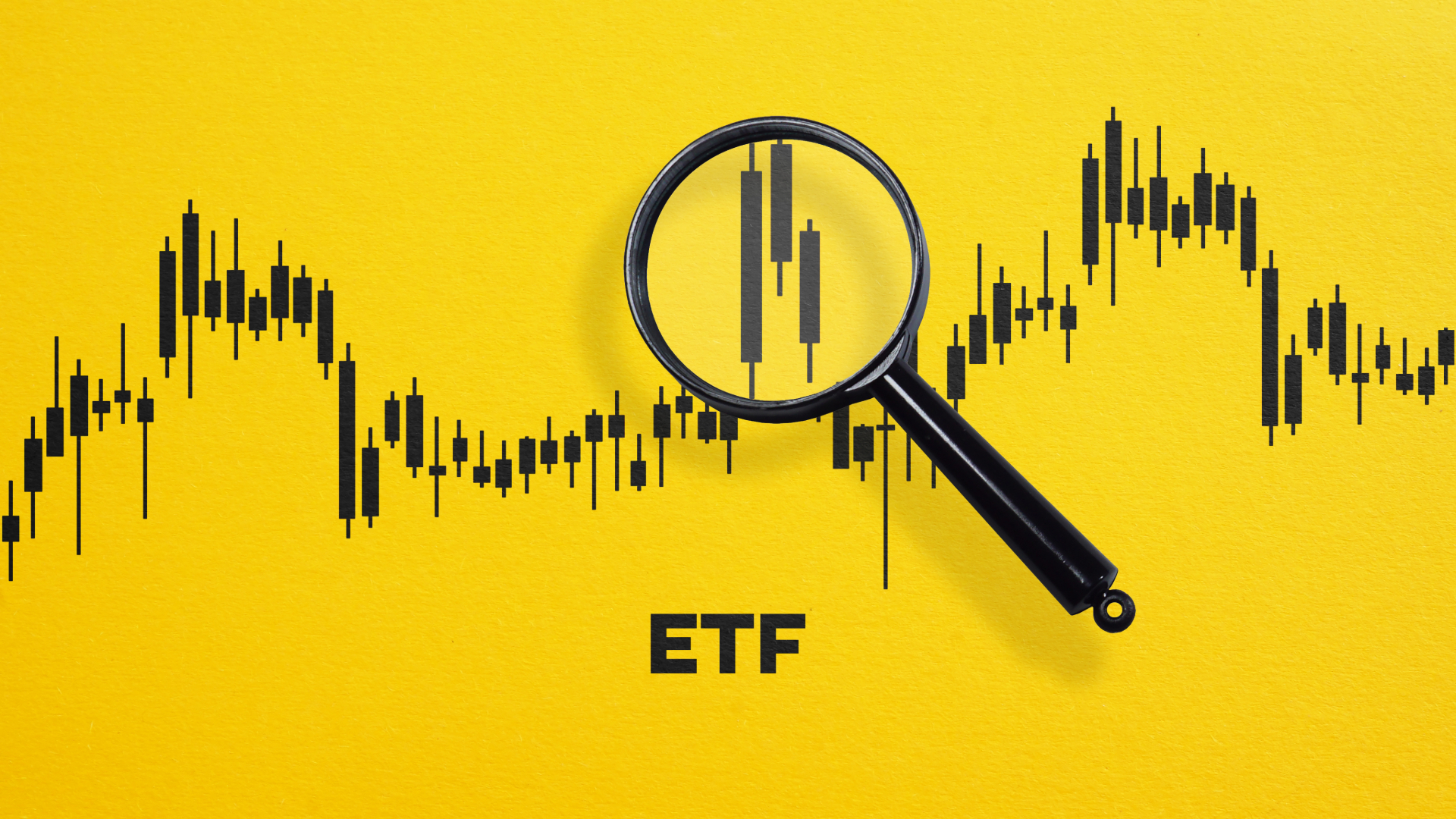Are you prepared to enter the realm of investment? Exchange-traded funds (ETFs) provide a versatile, diversified option for constructing an investment portfolio spanning various asset classes, including individual stocks, commodities, and precious metals. Within this guide, we will delve into the essence of ETFs, empowering you to select the most suitable options for your financial objectives. Prepare to dive in and explore a range of investments effortlessly through exchange-traded funds today!
Main Points to Remember
Exchange-Traded Funds provide investors with affordability, liquidity, and portfolio diversification.
ETFs offer a blend of diversification, adaptability, cost-effectiveness, and superior tax efficiency when compared to mutual funds and individual stocks.
Achieving optimal returns through ETF investments involves maintaining a long-term outlook, periodically rebalancing your portfolio, and prioritizing tax efficiency.
Understand the concept of Exchange-Traded Funds
Exchange traded funds (ETFs) are investment tools that facilitate the buying and selling of instruments representing a diversified portfolio of assets like stocks, bonds, or commodities. Investing in ETFs offers several advantages, including lower costs compared to alternative investment options. Additionally, ETFs provide enhanced liquidity and diversification benefits. Purchasing ETFs is similar to buying individual stocks on stock exchanges, making them attractive to both experienced investors and beginners alike.
Prior to embarking on your journey into Exchange-Traded Funds (ETFs), it's beneficial to grasp the fundamentals of these instruments, as well as the advantages they offer during investment endeavors.
Essential Insights into ETF Trading
ETFs offer a convenient trading option for investors. They are traded on stock exchanges, with their value often determined by the underlying assets they represent, such as indices or stocks from specific sectors like technology or healthcare. Some ETFs are passively managed, mirroring the performance of an index, while others are actively managed, aiming to outperform the markets. Investing in ETFs typically involves opening a brokerage account, like a trading account on XTB's xStation platform, conducting research to align with your investment objectives, and executing trades. Unlike mutual fund transactions, ETF trades can be carried out during regular trading hours, offering investors greater flexibility and control over their decisions.
Benefits of Investing in ETFs
Investing in Exchange-Traded Funds offers numerous advantages, including lower fees, improved tax efficiency, and the ability to transact at any time during trading hours. Compared to mutual funds, ETFs typically have lower expense ratios, making them a more cost-effective and passive investment option for many individuals. Additionally, the taxation of ETFs is generally more favorable than that of mutual funds. Intraday trading provides greater flexibility, allowing investors to respond quickly to short-term market fluctuations and adjust their portfolios accordingly.
![Bull on stock market]()
Exchange-Traded Funds operate by closely following a particular index, like the S&P 500, and maintaining a collection of assets that mirror the components of the underlying index. For instance, an ETF tracking the S&P 500 will possess a portfolio comprising stocks listed in the index. This approach enables investors to access the stock market without the necessity of purchasing individual stocks.
![Wall Street Bear Watching Stock Market Graph Chart Panic Praying Crash Crisis Money Loss Wall Street trading loss volatile funds short sell]()
ETFs offer several key advantages, with lower costs being one of the primary benefits. Compared to mutual funds, ETFs typically feature lower expense ratios. This is attributed to their efficient management and trading structure, resulting in fewer capital gains distributions and reduced tax burdens for investors.
Flexibility is another notable advantage of ETFs. These funds can be bought and sold throughout the trading day, akin to individual stocks. This grants investors greater control over their investments, allowing them to promptly respond to market fluctuations.
Accessibility is a significant perk of ETFs, as they are available to investors of all levels. Additionally, ETFs provide diversification benefits. By tracking various instruments, such as specific indices, ETFs offer diversified portfolios of assets. For instance, an ETF tracking the S&P 500 comprises a portfolio of 500 different stocks. This diversification can help mitigate risk and potentially yield more stable returns.
Contrasting ETFs with Mutual Funds and Individual Stocks
Exchange-Traded Funds (ETFs) offer investors a distinctive blend of advantages, incorporating the diversification benefits typically associated with mutual funds and the trading flexibility akin to individual stocks. In addition to these attributes, ETFs boast cost efficiencies, enhanced tax effectiveness, and greater versatility in portfolio management.
Let's compare Exchange-Traded Funds with traditional mutual funds and investing directly in single stocks. Firstly, due to their unique structure, the costs associated with owning an ETF are typically lower than those of similar holdings, such as shares purchased through conventional stockbrokers. Secondly, because fewer trades are required thanks to pooled investments, there is less paperwork involved, resulting in greater tax efficiency compared to directly owning individual securities.
Mutual Funds vs. ETFs
Mutual funds and ETFs are both popular investment options offering diversification. However, they differ significantly in terms of fees, trading structure, tax efficiency, and management style. ETFs generally have lower costs and can be traded throughout the trading day, unlike mutual funds, which are traded based on their net asset value (NAV) at the end of each trading session. This trading structure makes ETFs more tax-efficient, as trades occur on exchange markets rather than through issuing or redeeming shares. Additionally, ETFs typically follow passively managed indexes or sectors, whereas mutual funds offer both passive and actively managed options. While actively managed mutual funds aim to outperform market averages, they often come with higher fees, making them more costly for investors.
Individual Stocks vs. ETFs
When investing in individual stocks, ETFs offer enhanced diversification and tax efficiency while lowering costs. Exchange-Traded Funds enable investors to access a basket of assets rather than investing solely in one company, thereby reducing the risk associated with single-stock investments. Compared to purchasing stocks directly from companies or markets, ETFs provide additional benefits, including:
- Lower cost: ETFs typically come with lower commissions, allowing investors to save on trading fees.
- Enhanced liquidity: Being listed on exchanges, ETFs are easier and quicker to buy and sell compared to other investment vehicles.
- Tax advantages: Distributions reinvested within an ETF may qualify for deferred taxes until the fund is sold. However, it's essential to note that ETFs may not yield identical returns as equity investments alone, as their diversified nature tends to dampen volatility, balancing potential gains and losses.
Is Investing in ETFs the Right Choice for You?
Exchange-Traded Funds can be an advantageous option for investors seeking long-term investments. Typically, investors who maintain their investments for extended periods are more likely to experience favorable returns. However, it's important to acknowledge that like any investment, ETFs carry inherent risks.
If you're contemplating investing in ETFs, several tips can aid you in getting started. Firstly, conduct thorough research. Evaluate the performance history, expense ratio, and holdings of various ETFs. Next, assess your investment objectives and risk tolerance to ascertain if the ETF aligns with your portfolio goals.
After completing your research, the subsequent step involves selecting the appropriate broker. For example, XTB, a regulated broker, provides a wide range of instruments and competitive trading fees.
![White dice with dark capital letters on the table, arranged to the word "Investment". Business, wealth and shareholder concept]()
Diversifying your portfolio is crucial. While many ETFs offer inherent diversification, it's essential to broaden your portfolio further by investing in various sectors and asset classes. This strategy helps mitigate risk and potentially yields more stable returns.
Monitoring your investments is paramount. Regularly observe the performance of your ETF investments and adjust your portfolio as necessary to ensure alignment with your investment objectives.
In conclusion, exercise patience. ETFs require a long-term approach, emphasizing the importance of refraining from impulsive actions prompted by fleeting market changes. Stay committed to your investment plan and have confidence in the enduring prospects of your investments.
CFDs based on ETFs offer an intriguing alternative
![CFD - contract for difference text]()
Here are several reasons to consider investing in CFDs based on ETFs:
- Diversification: Much like ETFs, ETF CFDs offer exposure to a diversified range of assets, as ETFs typically encompass a variety of stocks or other underlying assets.
- Flexibility: ETF CFDs are traded on margin, requiring only a portion of the total transaction value as collateral. This grants more flexibility in your investment approach, potentially enabling larger trades with less capital.
- Leveraged Trading: ETF CFDs permit leveraged trading, allowing for the potential amplification of profits (or losses) through trading with borrowed funds. While this can be advantageous for seasoned traders, it's crucial to acknowledge the heightened risks associated with leveraged trading.
- Lower Costs: CFDs on ETFs often entail lower transaction costs compared to trading the underlying ETFs directly, contributing to a reduction in overall trading expenses.
Certainly, it's crucial to acknowledge that trading ETF CFDs involves inherent risk and may not suit every investor. Conducting thorough research and comprehending the associated risks and potential rewards before delving into CFDs on ETFs or any financial product is essential. Furthermore, seeking guidance from a financial advisor or professional is advisable if you have queries or apprehensions regarding your investment strategy.
ETF Varieties for Broad Portfolio Diversification
For diversifying investments, a variety of ETFs are available, including stock, bond, commodity, and specialty funds. These options allow for the customization of an investment portfolio according to individual goals. Whether seeking broad market exposure or specific opportunities, these exchange-traded fund offerings encompass all aspects necessary for constructing a robust financial strategy.
Let's explore how each type of ETF contributes to achieving desired objectives. Establishing the appropriate balance between risk and return is crucial in utilizing these instruments effectively for investment purposes.
![ETF acronym and the chart through magnifying glass on orange background]()
Equity Exchange-Traded Funds (ETFs)
Stock ETFs provide a great avenue for gaining market exposure or targeting specific investment opportunities. These funds typically track indexes such as the S&P 500, allowing investors to invest in major publicly traded companies in the U.S. For example, a technology-focused ETF would concentrate its investments within the tech sector.
Investing in stock ETFs can be a cost-effective and efficient alternative to actively managed investments. They generally have lower fees and allow you to diversify your portfolio across numerous stocks with a single fund. Using a platform like xStation at XTB, you can conveniently access a variety of ETFs, enabling you to customize your investments to align with your financial goals and risk tolerance.
Bond Exchange-Traded Funds (ETFs)
For investors looking for a more conservative strategy or a steady income stream, Bond ETFs are an excellent portfolio addition. These exchange-traded funds are based on underlying bonds, such as corporate and government debt instruments, which are typically less volatile than stocks. This allows for balanced diversification within your investments while providing consistent returns. The fixed-income securities within these ETFs offer the potential for regular income payments, helping to offset the fluctuations of the stock market.
Commodities Exchange-Traded Funds (ETFs)
ETFs that invest in commodities like gold, oil, and agricultural products offer an alternative method for diversifying portfolios and potentially hedging against inflation. These ETFs allow investors to gain from price movements without directly owning the commodities themselves.
Commodity ETFs can be an effective tool for hedging against rising prices, as commodity values often increase when currency values decline. They offer excellent portfolio diversification since their prices typically move independently of stock or bond markets.
Specialty Exchange-Traded Funds (ETFs)
Specialty ETFs offer access to investment strategies such as sustainable investing, currency hedging, or exposure to specific countries. This allows investors to participate in unique market segments and pursue investment themes aligned with their values or goals. However, thorough research is essential to understand the distinct risks associated with these investments and to have the appropriate knowledge compared to broader stock exchange ETFs.
Getting Started with Investing in ETFs
![wooden cube with ETF text]()
Beginning ETF investing involves several simple steps: open a brokerage account, conduct research to find ETFs that align with your investment goals and risk tolerance, and finally, once these steps are completed, start investing in ETFs. By following these measures, you can ensure the creation of a diversified portfolio tailored to your financial investment priorities.
Following this guide will demonstrate how easily you can establish an invested position!
Learn how to open a trading account at XTB.com with our xStation 5 trading platform <link>
Exploring and Choosing ETFs
After opening a brokerage account, it's time to select ETFs that align with your investment objectives and risk tolerance. Utilizing filters provided by brokers can help narrow down options based on expense ratios, performance metrics, and asset classes. It's important to consider the trading volume, indicating liquidity levels when buying or selling securities. Additionally, examine the underlying assets, strategies employed, and whether there's active management. Review past performance, though keep in mind future results may vary due to market changes. If confused or needing assistance with selection or processing, advisors are available to help.
Executing an ETF Trade
Your ETFs are ready for trading, so now it's time to proceed with your trades. Similar to individual stocks, you can buy or sell shares of an ETF on any trading day during market hours.
Before finalizing an ETF trade, consider the various order types available, including Market orders, Limit Orders, Stop orders, and Stop-limit orders. These options provide traders with opportunities to purchase at desired prices and effectively manage potential risks.
Additionally, investors should be mindful of associated costs that may arise from executing these transactions, such as fees charged by brokerage firms and spreads between bid and ask prices. These factors can impact overall returns when engaging in ETF investments or trades.
Recommended ETFs for Beginners
![business brainstorm strategy ideas sharing hand paper document chart analysis close up,business people teamwork consult organize big data summary together conference meeting office]()
Are you new to investing and interested in starting with ETFs? To begin building your investment portfolio, explore these top picks for the upcoming years: low-cost index ETFs that track broad market indexes, as well as industry or sector ETFs that offer specific exposure. Incorporating these budget-friendly tools as the foundation of your investments can assist in achieving your financial goals.
Let's delve even further into these recommended exchange-traded fund selections.
Low-Cost Index ETFs
For novice investors, low-cost index funds present an excellent opportunity to gain broad exposure to the stock market while keeping costs minimal. ETFs frequently mirror a range of major indexes, like the S&P 500 or Dow Jones Industrial Average, providing a cost-effective avenue for investing in diversified stock portfolios. Opting for affordable index funds can offer long-term growth potential with manageable expenses, a benefit no investor would want to overlook!
Exploring Sector and Industry ETFs at xtb.com
Sector and Industry ETFs present opportunities for enhanced returns and diversification advantages. At xtb.com, you have access to a range of sector-specific ETFs tailored to your investment objectives. Below are some relevant ETF options offered at xtb.com:
- Technology Sector ETF: If you're bullish on the growth prospects of tech companies, consider investing in a technology sector ETF like the Technology Select Sector SPDR Fund (XLK).
- Energy Sector ETF: For those interested in advancements in medical services and treatments, explore an energy select sector ETF such as the Energy Select Sector SPDR Fund (XLE) at xtb.com.
- Financial Sector ETF: Gain exposure to the financial sector by exploring options like the Financial Select Sector SPDR Fund (XLF) available at xtb.com.
Incorporating these ETFs into your portfolio allows you to customize your investments to align with your outlook and maintain a well-balanced exposure to specific sectors. xtb.com provides a variety of industry and sector-specific ETFs, enabling you to tailor your investment strategy and potentially reach your financial goals.
Investors who meticulously choose industry and sector ETFs at xtb.com can pursue enticing rewards by investing their capital through diversified portfolios that match their investment objectives.
Please note that this marketing communication is intended solely for informational and educational purposes. It does not constitute investment advice or imply any specific investment strategy. We do not advocate for any particular investment strategy or provide investment advisory services in this material.
This material does not consider the client's personal financial situation, needs and investment objectives.
Strategies for Effective ETF Investing
![Person using online trading interface with charts and statistics]()
To ensure a successful ETF investing journey, it's vital to adopt a long-term outlook and adapt your portfolio accordingly. This approach enables you to maximize returns, mitigate risk, and effectively reach your financial goals. In the following discussion, we'll delve deeper into the optimal strategies for approaching ETF investments.
Embracing Long-Term Vision
Investing in ETFs for the long term is an excellent strategy to harness the power of compounding returns and make your money work for you. To ensure success, it's crucial to establish an investment strategy beforehand, one that remains steadfast despite short-term market fluctuations.
Balancing Your Portfolio
![Sustainable portfolio management, long term wealth management with risk diversification concept]() Regularly rebalancing your ETF investments is a crucial element of successful investing. As the market changes, your portfolio may deviate from its original asset allocation, potentially increasing risk beyond your comfort level. Rebalancing ensures a strategic distribution across different assets and sectors, helping to mitigate losses from unpredictable fluctuations in value. Establishing a consistent schedule, such as annually or semi-annually, helps to uphold adherence to investment goals over time.
Regularly rebalancing your ETF investments is a crucial element of successful investing. As the market changes, your portfolio may deviate from its original asset allocation, potentially increasing risk beyond your comfort level. Rebalancing ensures a strategic distribution across different assets and sectors, helping to mitigate losses from unpredictable fluctuations in value. Establishing a consistent schedule, such as annually or semi-annually, helps to uphold adherence to investment goals over time.
Enhancing Tax Efficiency
When contemplating ETF investing, it's essential to consider the tax implications to enhance after-tax returns. ETFs traded on exchanges are renowned for offering more favorable tax treatment compared to other investment options like mutual fund trades. By selecting this asset class, you have the potential to lower your tax liabilities and maximize investment gains.
Overview
ETFs offer a versatile and dynamic investment opportunity, combining the diversification of mutual funds with the convenience of individual stock purchases. From low-cost index options to sector- or industry-specific choices, ETFs allow investors to build a customized portfolio that aligns with their financial goals and risk tolerance. To begin, open an account with a brokerage firm, conduct thorough research on available ETFs, and execute trades accordingly. Following sound advice such as exercising patience for long-term results, regularly monitoring portfolio balance, and considering tax efficiency can all contribute to achieving successful investment returns, ultimately securing your future prosperity!
The content of this article is for general information and educational purposes only. Any opinions, analyses, prices or other content does not constitute financial advice and does not take into account your level of understanding, investment objectives, financial situation or any other particular needs. Past performance is not a reliable indicator of future results, and any decision to act on such information is entirely at your own risk. You are solely responsible for such decisions. XTB is regulated by the DFSA.








 Regularly rebalancing your ETF investments is a crucial element of successful investing. As the market changes, your portfolio may deviate from its original asset allocation, potentially increasing risk beyond your comfort level. Rebalancing ensures a strategic distribution across different assets and sectors, helping to mitigate losses from unpredictable fluctuations in value. Establishing a consistent schedule, such as annually or semi-annually, helps to uphold adherence to investment goals over time.
Regularly rebalancing your ETF investments is a crucial element of successful investing. As the market changes, your portfolio may deviate from its original asset allocation, potentially increasing risk beyond your comfort level. Rebalancing ensures a strategic distribution across different assets and sectors, helping to mitigate losses from unpredictable fluctuations in value. Establishing a consistent schedule, such as annually or semi-annually, helps to uphold adherence to investment goals over time.